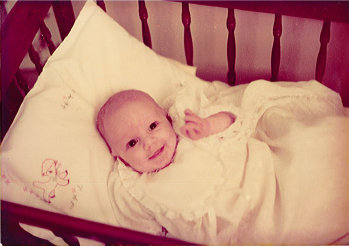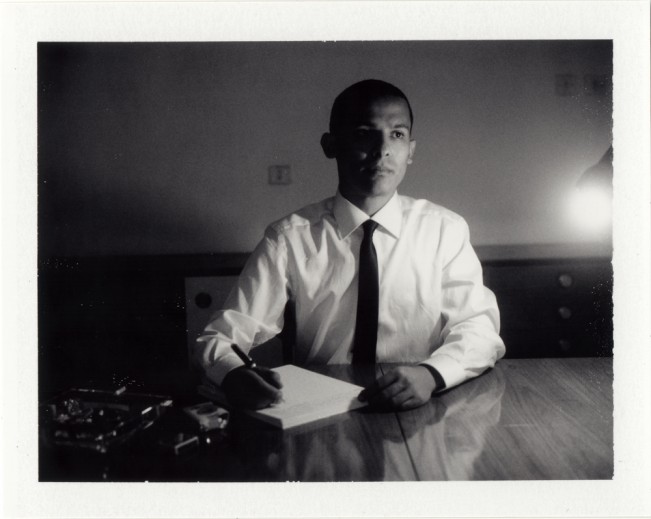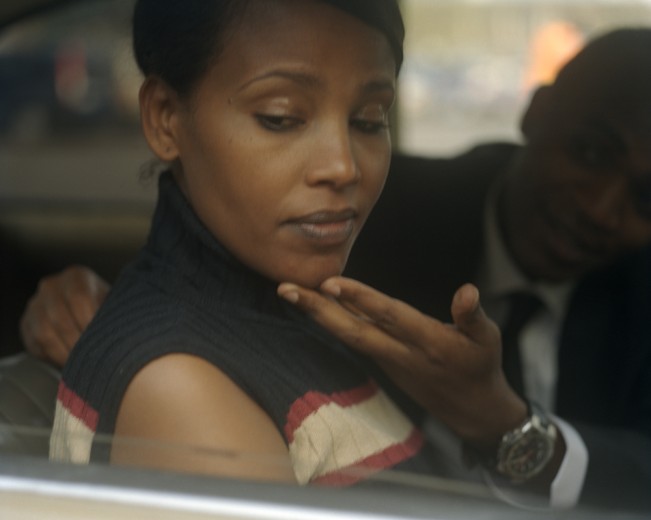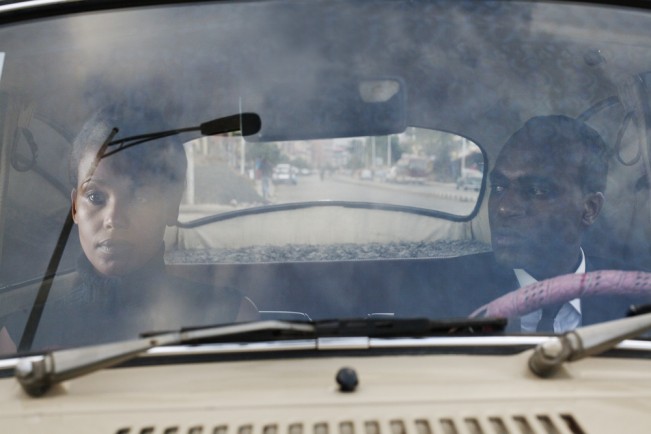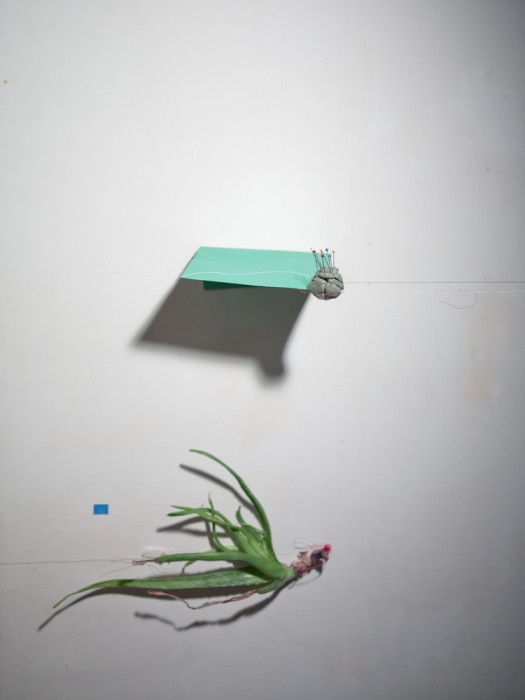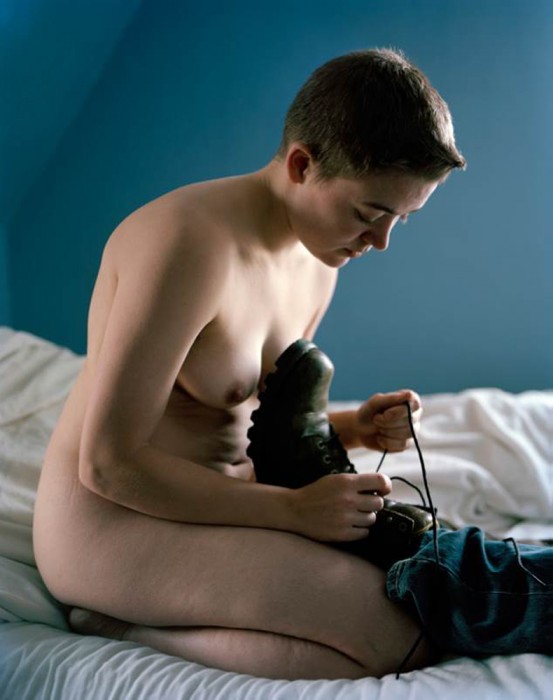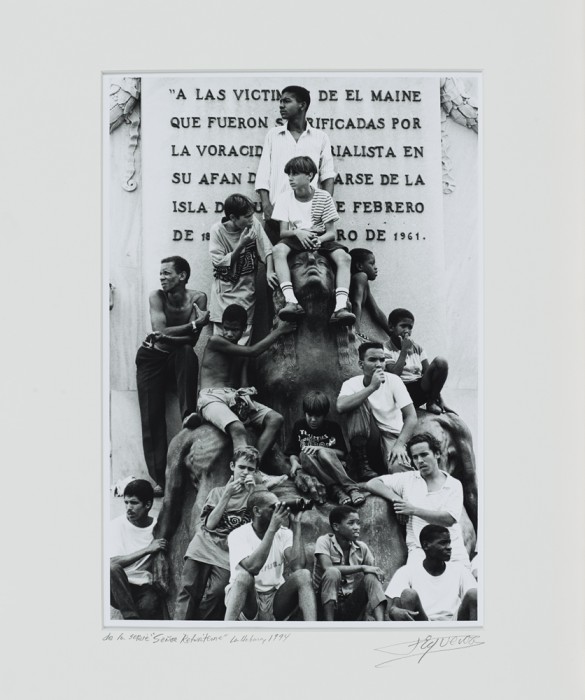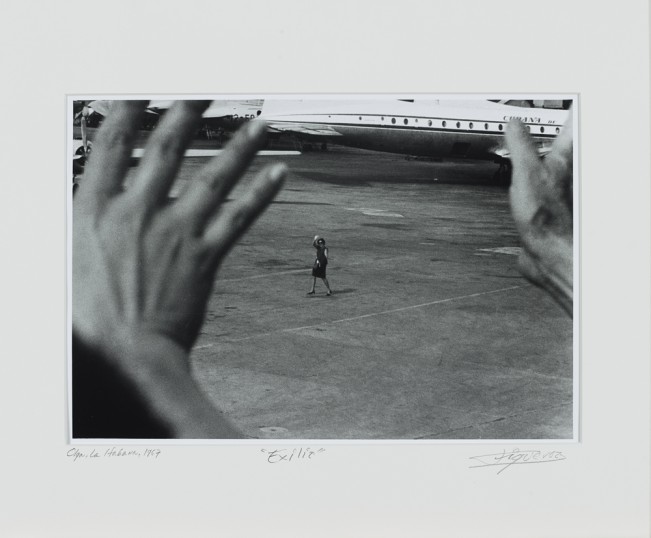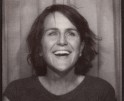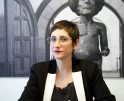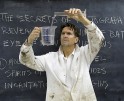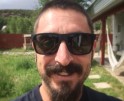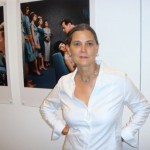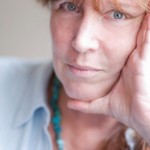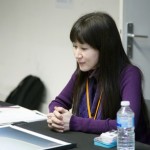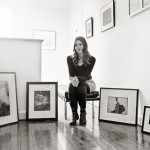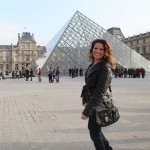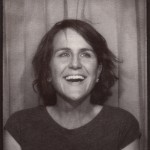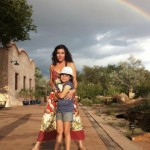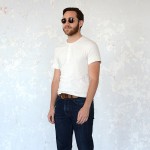The Amy Galpin Mixtape
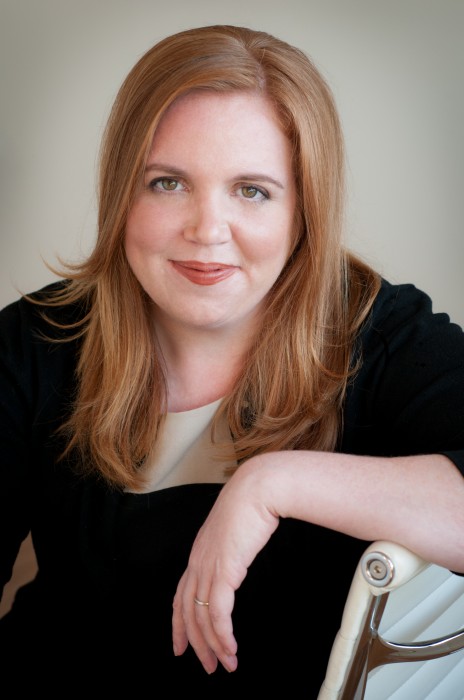 Amy Galpin and I crossed paths at the Medium Festival of Photography last October, and though we didn’t get a chance to spend time together, we began an e-mail friendship. I was curious about Amy and her role at the Cornell Fine Arts Museum. Her warm and open personality reflects someone you would certainly want to sit across from at a portfolio review and she brings her own curiosity and deep knowledge to curating. She comes to the curatorial world with a diverse set of interests, which is always wonderful for the expansion of the photographic idea.
Amy Galpin and I crossed paths at the Medium Festival of Photography last October, and though we didn’t get a chance to spend time together, we began an e-mail friendship. I was curious about Amy and her role at the Cornell Fine Arts Museum. Her warm and open personality reflects someone you would certainly want to sit across from at a portfolio review and she brings her own curiosity and deep knowledge to curating. She comes to the curatorial world with a diverse set of interests, which is always wonderful for the expansion of the photographic idea.
Amy is Curator of the Cornell Fine Arts Museum. Previously Galpin was Associate Curator, Art of the Americas at the San Diego Museum of Art. In San Diego, she curated Behold, America! Art of the United States from Three San Diego Museums, a 2012 collaboration between the San Diego Museum of Art, the Timken Museum of Art, and the Museum of Contemporary Art San Diego. Other projects for the San Diego Museum of Art include the group exhibition Women, War, and Industry and solo exhibitions with Hugo Crosthwaite, scott b. davis, Marianela de la Hoz, Noah Doely, and Rubén Ortiz-Torres. Other exhibitions include Translating Revolution: U.S. Artists Interpret Mexican Muralism (National Museum of Mexican Art in Chicago, 2010), Alfredo Ramos Martínez: Picturing Mexico from California (Pasadena Museum of California Art, 2014), Fractured Narratives: A Strategy to Engage (Cornell Fine Arts Museum, 2014), Women and Abstraction (Cornell Fine Arts Museum, 2015) and Jess Dugan: Every breath we drew (Cornell Fine Arts Museum, 2015). She has published articles and reviews in art ltd, Panorama, and American Art Review. She received her Ph.D. from the University of Illinois-Chicago.
And now, The Amy Galpin Mixtape!
Tell us about your growing up and what brought you to photography.
I’ve always loved museums and visual art. My mom tells a story about my crying as a little girl when we left the National Gallery of Art in London because “I haven’t seen all of the paintings.” I like to tell people that instead of going camping, my family went to museums. I can remember the sheer joy of a Georgia O’Keeffe retrospective at the Met when I was in middle school and a Frida Kahlo exhibition at the Museum of Fine Arts Houston when I was in high school. Early on, I was drawn to painting. I remember really falling in love with photography when I studied artists active in Mexico during the first half of the twentieth century during my early twenties. Photographers like Tina Modotti, Manuel Alvarez Bravo, Mariana Yampolsky, and Kati Horna excited me, and I wanted to know more.
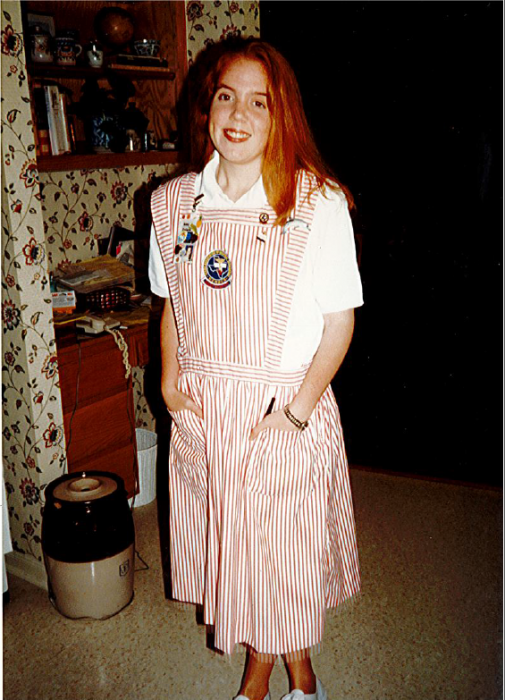
What is your title and job description, and tell us about a typical day?
Voicemail, email, meeting, repeat. I am the curator at the Cornell Fine Arts Museum of Rollins College, and like most people across a variety of professions, I get caught up in the emails and the meetings. Most of my brainstorming and writing happens outside of the normal working hours of the museum. I do always make time to spin through the galleries and see what visitors are doing or think about whether a work of art would look better somewhere else. My museum is on a college campus, so each day involves some sort of interaction with the students—whether it’s a tour, a conversation with an intern or work study student or just a nice interaction while walking across campus. It’s a cliché, but it is really inspiring to be around the students—to get their feedback and to be inspired by their energy. The daily experience of my job always involves a lot of thinking about the big picture and how programming and attendance can be improved. My director is really supportive of change and over the last year the museum has made some major modifications: introduced audio guides, inaugurated morning programming for adults, and made tweaks to our family programming and docent programs. We’ve also been the grateful beneficiaries of a major collection of contemporary art. Photographers like Any-My Lê, Hiroshi Sugimoto, Carrie Mae Weems, Hank Willis Thomas, Richard Mosse, and Zanele Muholi are represented in the collection. Other recent acquisitions include work by Matthew Brandt and Jess T. Dugan. All of this development has led to a forty-seven percent increase in attendance. So each day for me is about change, and well, transformation.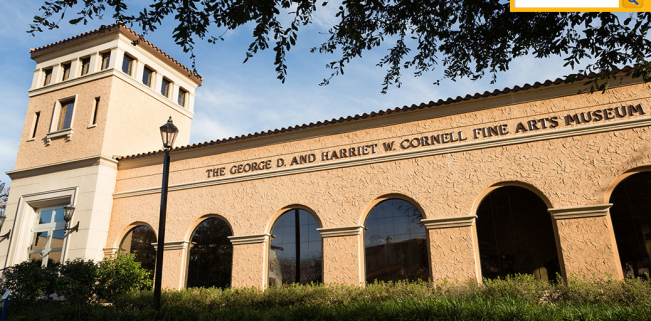
What are some of your proudest achievements?
Tough one! In terms of my professional life, some of the shows that I am proudest of came together despite short deadlines or various other restrictions. I curated Women, War, and Industry at the San Diego Museum of Art and it drew heavily from the permanent collection with works by Berenice Abbott, Florence Kemmler, Esther Bubley, Margaret Bourke-White, and Alfred Eisenstaedt. I was grateful to supplement the modern component with contemporary loans by artists such as Catherine Opie, Benjamin Lowy, and Stephanie Sinclair. I also really liked the solo exhibition of Rubén Ortiz-Torres’ work mounted at the same institution. It was fun to present a lesser known body of work (drawings, photographs, video, and paintings) by an established artist. The photographs included in the show function as interesting documents of a certain aspects of Mexico City in the late 1980s. All the solo shows—working directly with artists—and trying to come present a show that stays true to their vision, have been rewarding.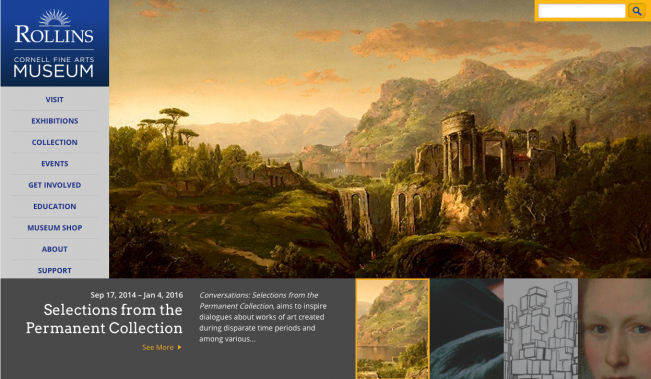
What do you look for when attending a portfolio review?
Something new—something that doesn’t make me immediately think of five other photographers doing the same thing. Simultaneously, however, I am looking for something that fits into a larger conversation of contemporary art or the history of art.
Does it feel current? Does it relate to the history of photography? How would this work function in a group or solo show? How would I contextualize it? I try to find out what the photographers’ goals are too—and see if I can help.
Any advice for photographers coming to a review event?
Just be really open for feedback. I mostly find this, but occasionally I have an experience where the individual is resistant. I always tell anyone I meet with that I am going to say a lot of things, and it’s your job as the artist to take it or leave it and synthesize all the feedback you get from different people. I never expect for someone to follow my suggestions or advice verbatim, but I do encourage artists who feel frustrated that they are not showing their work to be really open to feedback. Also, I think if an artist can practice their presentation a few times, it allows for a better experience. It doesn’t need to be a polished speech, but I always feel bad when a photographer isdisappointed that they haven’t presented the material or ideas that they want. It’s hard to have a fruitful conversation if the ideas are not articulated clearly.
What is something unexpected that we don’t know about you?
I love watching soccer. My dog is named after a Bayern Munich soccer player.
And since this is a Mixtape, what is your favorite song, band, and do you dance?
Along the lines of #6, most people are surprised to know that I listen to hip-hop and R&B—my preferred background music for driving and exercising and really anything right now. But if we are talking all-time favorite songs right at this moment, the list would include: September (Earth, Wind, and Fire), Obvious Child (Paul Simon), and Foo Fighters (Best of You). I do dance! Frequently and daily, but only in the privacy of my home.
And now I hand the controls to Amy…
Thanks to Aline for this opportunity and generally speaking for providing a platform for contemporary photography. Now that Aline has given me a chance to spin the turntables, I feel it’s only appropriate to share a visual mash-up of photography that I am thinking about right now.
I was co-curator of an exhibition, Fractured Narratives: A Strategy with Abigail Ross Goodman. The show opened at the Cornell Fine Arts Museum, and it’s now on view at the David Owsley Museum at Ball State University. There is lots of lens-based media in the exhibition from Photographs by Dawoud Bey to videos by Sandra Ramos and Alfredo Jaar.
Fractured Narratives also includes works by Gottesman inspired by the Ethiopian novel Oromaye written by Baalu Girma (see images below). Published in 1983, the book is a thinly veiled critique of the dictatorship in Ethiopia. Shortly after it was released, the books book was banned and Girma, who worked for the government, disappeared. Friends in Ethiopisa recommended the book to Gottesman, and he first experience with the texts involved read it aloud with a friend. The process of translation and hearing the book and discussing it, became a catalyst for Gottesman’s The Oromaye Project. In taking inspiration from a novel and playing with its narrative structure, Gottesman uses another’s story as a platform to explore avenues of thought and challenge his audience to reflect on political unrest, censorship, and cultural difference. The images included here are recreated narratives based on the book and the author’s life.
Other upcoming work includes presenting two photographs by Ellen Garvens (see image below), who was recently featured on Lenscratch, and a video by Barbara Kasten in my upcoming exhibition, Women, and Abstraction. The show was originally conceived in tandem with Women, War, and Industry at the San Diego Museum of Art, but has had a whole new life at the Cornell Fine Arts Museum and I am really grateful and inspired by its transformation as an idea and now a show.
Also, I am looking forward to presenting Jess T. Dugan’s Every breath we drew at the Cornell Fine Arts Museum beginning in August 2015 (see image below). A monograph of this work published byDaylight Press, will be released in 2015.
Several photographs by José Figueroa were recently given to the Cornell Fine Arts Museum of Rollins College by Barbara and Ted Alfond as a part of the Alfond Collection of Contemporary Art (see below). I spend time with the works each week and think about documentation, loss, alienation, and everyday life experience.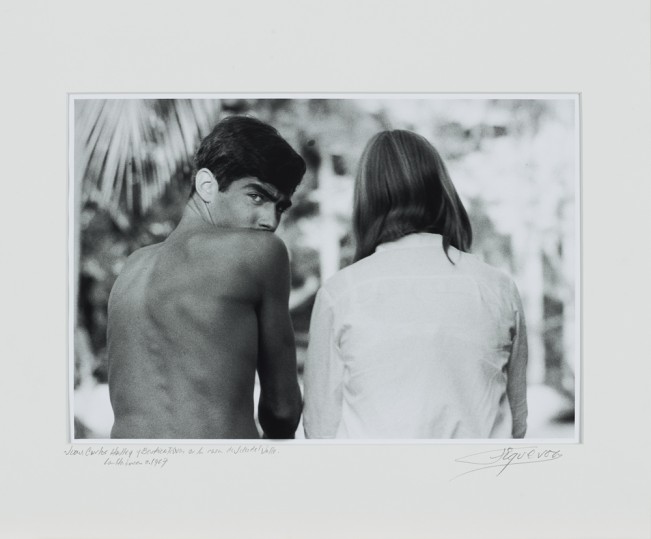
Posts on Lenscratch may not be reproduced without the permission of the Lenscratch staff and the photographer.
Recommended
-
The Christy Karpinski MixtapeDecember 2nd, 2023
-
The Rotem Rozental MixtapeJanuary 27th, 2023
-
The Brian Taylor MixtapeJune 14th, 2019
-
The David Rosenberg MixtapeMay 3rd, 2019
-
The Jonathan Blaustein MixtapeJuly 20th, 2018

